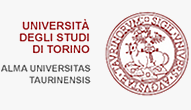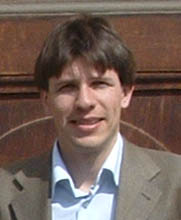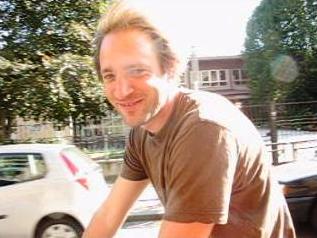Benvenuti sulla home page del Progetto AMALFI (Advanced Methodologies for the Analysis and management of the Future Internet). Il progetto nasce da una collaborazione del Dipartimento di Informatica e del Dipartimento di Matematica dell'Universitá di Torino.
The AMALFI project involves the collaboration among two strong scientific research groups with somehow similar research interests and complementary backgrounds: the Performance Evaluation group of the Computer Science Department, and the Probability and Statistics group of the Mathematics Department, both at the University of Torino.
Computer Science Department
The Performance Evaluation group has a consolidated experience in the development and
application of modeling formalisms for performance evaluation of computer and telecommunication
systems. Research topics that have been addressed in the past and that characterize the competence
of the group include:
- development of efficient computational algorithms for the solution of product form queuing networks,
- proposal of aggregation techniques for the solution of large queuing networks,
- definition of new modeling formalisms such as Generalized Stochastic Petri nets and Well Formed Stochastic Petri nets,
- application of fluid and diffusion approximations to stochastic Petri nets,
- proposals of new temporal logics (CSLTA) for stochastic model checking.
Department of Mathematics
People of the Probability and Statistics group involved in this project have
a well established experience on diffusion models (Sacerdote, Zucca,
Sirovich, Giraudo) and on the application of copulas to modeling (Sacerdote,
Zucca, Sirovich). Their past experience is related to theoretical
mathematical problems or to modeling instances in very different contexts,
such as neuronal or metrological modeling. However neuronal networks model
for the transmission of information in the human body share features with
the Internet network models addressed in the AMALFI project. Abstractions
used to describe neuroscience problems and the corresponding mathematical
tools can be easily transferred to the context of the present project.
Il progetto AMALFI prevede la collaborazione tra due forti gruppi di ricerca scientifica con interessi in qualche modo simili e cultura scientifica complementare: il gruppo di valutazione delle prestazioni del Dipartimento di Informatica, e il gruppo di Probabilitá e Statistica del Dipartimento di Matematica, entrambi presso l'Universitá di Torino.
Dipartimento di Informatica
Il gruppo di valutazione delle prestazioni ha una consolidata esperienza nello sviluppo e
applicazione di formalismi modellistici per la valutazione delle prestazioni di sistemi di calcolo e di
telecomunicazione. Gli argomenti di ricerca che sono stati afrontati dal gruppo nel passato e che ne
caratterizzano le sue competenze includono:
- lo sviluppo di algoritmi computazionali efficienti per la soluzione di reti di code in forma prodotto, l'ideazione di tecniche di aggregazione per la soluzione di reti di code di grandi dimensioni,
- la definizione di nuovi formalismi come le reti di Petri Stocastiche Generalizzate e le reti di Petri Stocastiche ben Formate,
- l'applicazione di approssimazioni fluide e diffusive alle reti di Petri stocastiche,
- le proposte di nuove logiche temporali (CSLTA) per il model checking stocastico.
Dipartimento di Matematica
Le persone del gruppo di Probabilitá e Statistica coinvolti in questo
progetto hanno una consolidata esperienza nei modelli di diffusione
(Sacerdote, Zucca, Sirovich, Giraudo) e nella applicazione delle copule alla
modellazione (Sacerdote, Zucca, Sirovich). La loro esperienza passata
riguarda problemi teorici matematici e istanze di modelli in
contesti molto diversi, come la modellazione neuronale o metrologica.
I modelli di reti neuronali per la trasmissione delle informazioni
nel corpo umano condividono caratteristiche con i modelli di reti di
comunicazione in Internet affrontati nel progetto AMALFI. Le astrazioni utilizzate per descrivere i
problemi delle neuroscienze e gli strumenti matematici corrispondenti
possono essere facilmente trasferiti al contesto del presente progetto.
“Future Internet” (FI) is the key enabler underpinning the Digital Agenda [DA10] launched in March 2010 as part of Europe 2020 Strategy to exit the crisis and prepare the EU economy for the challenges of the next decade. FI will exploit the increasing capacity available both in the network core and at the edges to provide an open, trusted, and interoperable platform enabling the discovery, creation, and delivery of multiple types of services and contents, with an emphasis on mobile and smart applications of high socio-economic value.
Our research project is grounded on the consideration that, as new technologies, services, and applications come into play at such a high rate, there is an increasing need to update also quantitative methods and performance evaluation tools to analyze and manage these new trends. In particular, we argue that understanding FI requires a substantial change of perspective with respect to previous approaches, which are often based on a limited set of metrics (such as throughput and delay) and on the traditional client-server paradigm. An entire new metrology should be developed to quantify these new requirements in terms of usability, scalability, security, reliability, interoperability, and energy efficiency and to account for modern content delivery infrastructures based on distributed caches and peer-assisted solutions.
The goal of the project is to extend and improve existing mathematical methods (based on stochastic processes, diffusion approximations, decomposition, aggregation, copulas, temporal logics, game theory, compressive sensing, network coding) to develop advanced frameworks, methodologies and tools for approaching the analysis and management of novel architectures proposed for FI. Our methodologies, designed to address the very large scale and complex models deriving from these architectures and validated by realistic simulations, will help to select, configure and manage services and applications paving the way to FI.
“Future Internet” (FI) è il fattore chiave alla base dell' “Agenda Digitale” [DA10], lanciata nel marzo 2010 come parte della strategia Europa 2020 per uscire dalla crisi e preparare l'economia dell'UE per le sfide del prossimo decennio. FI sfrutterá la crescente capacitá disponibile sia nel cuore della rete sia alla sua periferia per fornire una piattaforma aperta, affidabile e interoperabile che consenta la ricerca, creazione e fruizione di una molteplicitá di servizi e contenuti, con un'enfasi verso le applicazioni mobili e intelligenti di elevato valore socio-economico.
Il nostro progetto di ricerca si fonda sulla considerazione che, dal momento in cui nuove tecnologie, servizi e applicazioni entrano in gioco ad un ritmo sempre piú elevato, vi è una crescente necessitá di aggiornare anche i metodi quantitativi e gli strumenti di valutazione delle prestazioni per studiare e gestire queste nuove tendenze. In particolare, crediamo che la comprensione di FI richieda un cambiamento sostanziale di prospettiva rispetto agli approcci precedenti, che si basano spesso su un insieme limitato di metriche e sul tradizionale paradigma client-server. Un'intera nuova metrologia deve essere sviluppata per quantificare queste nuove esigenze in termini di usabilitá, scalabilitá, sicurezza, affidabilitá, interoperabilitá ed efficienza energetica, tenendo anche in conto le moderne infrastrutture di distribuzione di contenuti basate su cache distribuite e architetture peer-assisted.
L'obiettivo del progetto è quello di estendere e migliorare i metodi matematici esistenti per sviluppare ambienti avanzati, metodologie e strumenti utili per l'analisi e la gestione delle nuove architetture proposte per FI . Le nostre metodologie, ideate per affrontare modelli grandi e complessi, tipici di queste nuove architetture e convalidati da simulazioni realistiche, aiuteranno a scegliere, configurare e gestire servizi e applicazioni aprendo la strada a FI.
This is the list of publications done so far:
Lista delle pubblicazioni effettuate:
- L. Sacerdote, M. Garetto, F. Polito, M. Sereno "Superprocesses as Models for Information Dissemination in the Future Internet" in Mathematic al Models and Methods for Planet Earth A. Celletti, U. Locatelli, T. Ruggeri, E. Strickland eds. Springer INdAM Series 6, pp 157-170", 2014.
- R. Gaeta, M. Grangetto, R. Loti, "Exploiting Rateless Codes and Belief Propagation to Infer Identity of Polluters in MANET," Mobile Computing, IEEE Transactions on , vol.13, no.7, pp.1482,1494, July 2014.
- R Gaeta, M Grangetto; "Identification of malicious nodes in peer-to-peer streaming: a belief propagation based technique", IEEE Transactions on Parallel and Distributed Systems, Vol. 24, N. 10, October 2013, pp. 1994-2003.
- C. Borgiattino, C.-F. Chiasserini, F. Malandrino, and M. Sereno, "Advertisement Delivery and Display in Vehicular Networks ", Proceedings of the IEEE 82nd Vehicular Technology Conference (VTC2015-Fall) Sep 6-9, 2015, Boston, MA, USA.
- V. Martina, M. Garetto, E. Leonardi, "A unified approach to the performance analysis of caching systems", in proc. IEEE INFOCOM 2014, pp 2040-2048.
- Stefano Traverso, Mohamed Ahmed, Michele Garetto, Paolo Giaccone, Emilio Leonardi, Saverio Niccolini: "Temporal locality in today's content caching: why it matters and how to model it". Computer Communication Review 43(5): 5-12 (2013).
- Stefano Traverso, Mohamed Ahmed, Michele Garetto, Paolo Giaccone, Emilio Leonardi, Saverio Niccolini, "Unravelling the Impact of Temporal and Geographical Locality in Content Caching Systems," IEEE Transactions on Multimedia 17(10): 1839-1854 (2015).
- Michele Garetto, Emilio Leonardi, Stefano Traverso: "Efficient analysis of caching strategies under dynamic content popularity. IEEE INFOCOM 2015, pp. 2263-2271, April 2015, Hong Kong.
- Giuseppe Rossini, Dario Rossi, Michele Garetto, Emilio Leonardi: "Multi-Terabyte and multi-Gbps information centric routers". INFOCOM 2014: pp. 181-189.
- Giuseppa Alfano, Michele Garetto, Emilio Leonardi: Content-centric wireless networks with limited buffers: When mobility hurts. INFOCOM 2013: pp. 1815-1823.
- Delia Ciullo, Valentina Martina, Michele Garetto, Emilio Leonardi, "How much can large-scale Video-on-Demand benefit from users' cooperation?" INFOCOM 2013: pp. 2724-2732.
- Delia Ciullo, Valentina Martina, Michele Garetto, Emilio Leonardi, Giovanni Luca Torrisi: "Asymptotic Properties of Sequential Streaming Leveraging Users' Cooperation". IEEE Transactions on Information Theory 59(12): 8386-8401 (2013).
- A. Fiandrotti, V. Bioglio, M. Grangetto, R. Gaeta, E. Magli, "Band Codes for Energy-Efficient Network Coding With Application to P2P Mobile Streaming," Multimedia, IEEE Transactions on , vol.16, no.2, pp.521,532, Feb. 2014.
- A.Fiandrotti, R. Gaeta, M.Grangetto, "Simple Countermeasures to Mitigate the Effect of Pollution Attack in Network Coding Based Peer-to-Peer Live Streaming", IEEE Transactions on Multimedia, Vol. 17, N. 4, April 2015, pp. 562-573.
- V.Bioglio, R Gaeta, M Grangetto, M.Sereno, "Rateless codes and random walks for P2P resource discovery in Grids", IEEE Transactions on Parallel and Distributed Systems, Vol. 25, N. 4, April 2014, pp. 1014-1023.
- C. Anglano, R Gaeta, M Grangetto, "Exploiting Rateless codes in Cloud Storage Systems", IEEE Transactions on Parallel and Distributed Systems, Vol. 26, N. 5, May 2015, pp. 1313-1322.
- M. Gribaudo, M. Iacono, D. Manini, "Improving reliability and performances in large scale distributed applications with erasure codes and replication", Future Generation Computer Systems, in Press, available on line 30 July 2015.
- G. Carofiglio, R. Gaeta, M. Garetto, P. Giaccone, E. Leonardi, M. Sereno, “Fluid-diffusive modelling for large P2P file-sharing systems", Mathematical and Computer Modelling of Dynamical Systems, Vol. 18, N.6, pp. 587-612, 2012.
- R. Gaeta, V. Ciancaglini, R. Loti, L. Liquori , "Modeling and analysis of large scale interconnected unstructured p2p networks". In Proceedings of the International Conference on Parallel and Distributed Systems - ICPADS, 2012.
- Vincenzo Ciancaglini, Rossano Gaeta, Riccardo Loti, Luigi Liquori, ""Interconnection of large scale unstructured P2P networks: modeling and analysis"". Lecture Notes in Computer Science (including subseries Lecture Notes in Artificial Intelligence and Lecture Notes in Bioinformatics) N. 7984, pp. 183-197, 2013.
- Valerio Bioglio, Marco Grangetto, Rossano Gaeta, Matteo Sereno, "A practical Random Network Coding scheme for data distribution on peer-to-peer networks using rateless codes", Performance Evaluation, Vol. 70, N. 1, pp. 1-13, 2013.
- C. Anglano, M. Guazzone, M. Sereno, "Maximizing profit in green cellular networks through collaborative games", Computer Networks, Volume 75, Part A, 2014, pages 260-275.
- M. Beccuti, E. Bibbona, A. Horvath, R. Sirovich, A. Angius, and G. Balbo, Analysis of Petri Net models through Stochastic Differential Equations, Proceedings of International Conference on application and theory of Petri nets and other models of concurrency (ICATPN'14), Springer LNCS vol. 8489.
- E. G. Amparore, Reengineering the Editor of the GreatSPN Framework. Petri Nets and Software Engineering. International Workshop, PNSE'15, Brussels, Belgium, June 22-23, 2015. pp: 153-170.
- E. Benedetto, L. Sacerdote, C. Zucca "A first passage problem for a bivariate diffusion process: Numerical solution with an application to neuroscience when the process is Gauss–Markov", Journal of Computational and Applied Mathematics (2013), 242, pp. 41–52.
- M. T. Giraudo, L. Sacerdote, R. Sirovich, " Non–Parametric Estimation of Mutual Information through the Entropy of the Linkage" Entropy (2013), 15, pp. 5154-5177.
- M. Tamborrino, L. Sacerdote, M. Jacobsen, "Weak convergence of marked point processes generated by crossings of multivariate jump processes”, Applications to neural network modeling", Physica D (2014), pp 45-52.
- L. Sacerdote, C. Zucca, "Joint distribution of ?rst exit times of a two dimensional Wiener process with jumps with application to a pair of coupled neurons", Math. Biosc. (2013), 245, pp 61–69.
- É. André, L. Fribourg, J. Sproston. "An Extension of the Inverse Method to Probabilistic Timed Automata", Formal Methods in System Design, Vol. 42(2), pp. 119-145, 2013.
- G. Norman, D. Parker, J. Sproston. "Model Checking for Probabilistic Timed Automata", Formal Methods in System Design, Vol 43(2), pp. 164-190, 2013.
- E. Bibbona, I. Negri, “Higher Moments and Prediction Based Estimation for the COGARCH(1,1) model”, Scandinavian Journal of Statistics, march 2015.

Michele Garetto
Michele Garetto was born in Torino, Italy, in 1975. He graduated from Politecnico di Torino in Telecommunications Engineering in May 2000.
From 2001 to 2004 he was a PhD student in the Telecommunication Networks Group at Dipartimento di Elettronica of Politecnico di Torino, supervised by Prof. Marco Ajmone Marsan. From October 2001 to June 2002, he was with the Computer Science Department at the University of Massachusetts at Amherst, visiting the Advanced Computer Networking Research Group of Prof. Don Towsley and Prof. Jim Kurose.
In January 2004 he got his PhD in Electronics and Telecommunications Engineering, with a dissertation entitled "Analytical Models of IP Networks with TCP Traffic". Between August and January 2005 he held a Post-Doc position at the Electrical and Computer Engineering Department of Rice University, Houston, working in the networks group of Prof. E.W. Knightly. From September 2005 to Semptember 2006 he was a Post-Doc in the Telecommunication Networks Group of Politecnico di Torino as a Lagrange Fellow supported by the Lagrange Project. Since October 2006 he has been an assistant professor at Universitá degli Studi di Torino, Dipartimento di Informatica.
He is currently teaching Computational Statistics for the Faculty of Agriculture of the University of Turin, where he is responsible also for basic undergraduate computer science classes. His research interests lie in the area of Networking, more specifically in the field of performance evaluation of wired and wireless communication networks. During the last 8 years he has been developing analytical models for a variety of communications systems, exploiting many different techniques coming from queueing theory, stochastic processes, differential equations, stochastic geometry, percolation. He has co-authored more than 40 papers in major (ISI) international journals and conferences of the networking field, including IEEE/ACM Trans. on Networking, IEEE Trans. on Mobile Computing, IEEE INFOCOM, ACM MobiHoc, ACM MobiCom, ACM Sigmetrics.

Michele Garetto
Michele garetto è nato a Torino, Italia, nel 1975. Si è laureato in Ingegneria delle Telecomunicazioni al Politecnico di Torino nel 2000.
Dal 2001 al 2004 ha svolto il Dottorato di Ricerca nel gruppo Reti di Telecomunicazioni del Dipartimento di Elettronica del Politecnico di Torino sotto la guida del Prof. Marco Ajmone Marsan. Da ottobre 2001 a giugno 2002 è stato in visita presso il Computer Science Department dell'Universitá del Massachusetts ad Amherst nel gruppo Advanced Computer Networking guidato dai Prof. Don Towsley e Jim Kurose.
Nel gennaio 2004 ha conseguito il titolo di Dottore di Ricerca in Ingegneria Elettronica e delle Comunicazioni, con una tesi intitolata "Modelli analitici di reti IP con traffico TCP". Da agosto a gennaio 2005 ha ricoperto il ruolo di post-doc presso il Electrical and Computer Engineering Department della Rice University, Houston, nel gruppo reti del Prof. E.W. Knightly. Da settembre 2005 a settembre 2006 è stato un post-doc del gruppo Reti di Telecomunicazione del Politecnico di Torino in qualitá di Lagrange Fellow supportato dal Progetto Lagrange. Da ottobre 2006 è entrato in ruolo come ricercatore presso il dipartimento di Informatica dell'Universitá degli Studi di Torino.
Attualmente è titolare del corso di "Informatica applicata all'eleaborazione statistica dei dati" presso la Facoltá di Agraria dell'universitá di Torino, dove è responsabile anche dei corsi di alfabetizzazione informatica. I suoi principali interessi di ricerca sono nel campo della valutazione delle prestazioni di reti di comunicazioni fisse e mobili. Mi sono occupato in particolare nello sviluppo di modelli analitici di reti di comunicazioni complesse, cercando di cogliere gli aspetti fundamentali del loro comportamento tramite modelli computazionalmente trattabili. Negli ultimi 8 anni ha sviluppato modelli per vari tipi di reti, usando svariate tecniche basate sulla teoria dei processi stocastici, della teoria delle code, equazioni diffrenziali, geometria stocastica. E' coautore di oltre 40 pubblicazioni in riviste internazionali e nelle principali conferenze internazionali del settore, tra cui IEEE/ACM Trans. on Networking, IEEE Trans. on Mobile Computing, IEEE INFOCOM, ACM MobiHoc, ACM MobiCom, ACM Sigmetrics.

The AMALFI project is kindly supported by Compagnia di SanPaolo foundation as part of their research and higher education projects.

Il Progetto AMALFI è sponsorizzato dalla fondazione Compagnia di SanPaolo.
Official Mailing List of the Project: amalfiproject![]() di.unito.it
di.unito.it
Mailing List ufficiale del Progetto: amalfiproject![]() di.unito.it
di.unito.it













